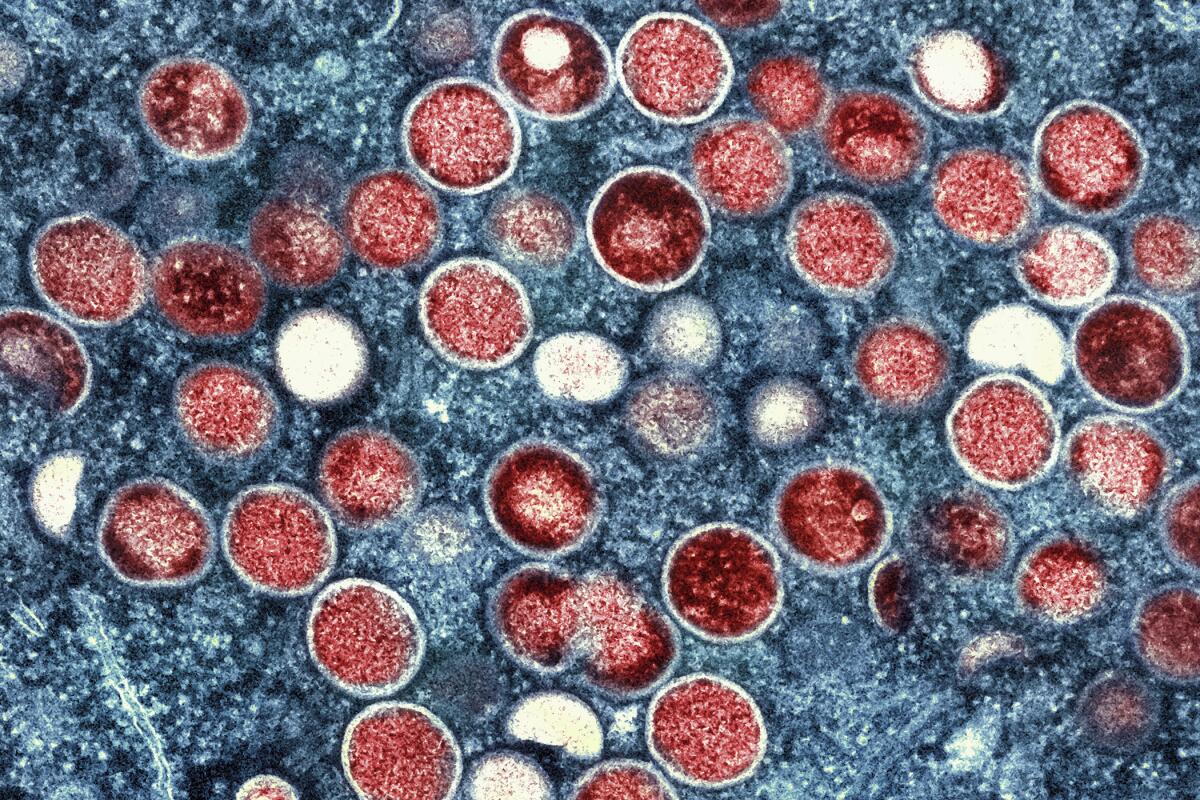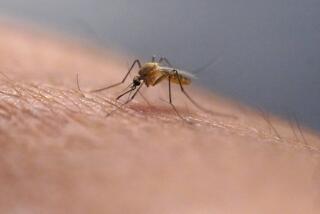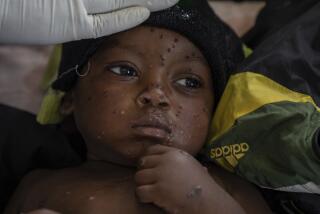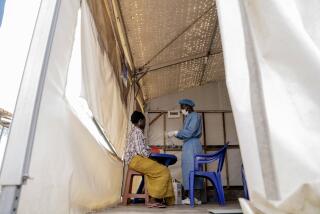Mpox is again a global health emergency. How concerned should Californians be?

Two years ago, cases of the infectious viral disease mpox were rapidly increasing in cities across the globe — particularly in the U.S. — causing a scramble for vaccine doses to help contain the outbreak and ease the virus’ uncomfortable symptoms.
That strain of mpox was rarely deadly; even still, officials soon declared it a worldwide public health emergency in July 2022. In the months that followed, the spread of the virus steadily fell, though cases have never completely gone away.
But last week, a much more concerning variant of mpox, previously called monkeypox, has once again prompted such a global health alert. This outbreak is primarily affecting Central African countries, but officials warn that it appears to spread more easily than the 2022 strain — and is significantly more deadly.
Where is mpox a concern right now?
The World Health Organization has deemed this clade, or variant, of mpox the latest global health emergency. The majority of these mpox Clade I cases have been recorded in the Democratic Republic of Congo, where there have already been 14,000 cases and 524 deaths this year, according to Tedros Adhanom Ghebreyesus, the director-general of the World Health Organization.
Mpox belongs to the same family of viruses as smallpox but causes milder symptoms such as fever, chills and body aches. People with more serious cases can develop lesions on the face, hands and chest. With the latest outbreaks of mpox, lesions can also develop on a person’s genitals, which can make it harder to spot, in turn making it easier to spread.
While this virus is endemic, or naturally occurring, in Congo and parts of Central Africa, health officials have also recently detected this more concerning strain in other nearby, non-endemic countries, and the first case was confirmed outside of Africa in Sweden. Public health officials are concerned about the “potential to spread further across countries in Africa and possibly outside the continent,” according to the World Health Organization.
As of this summer, the CDC still considers the risk of mpox to the general public in the U.S. very low, but said the risk is slightly higher among men who have sex with men. During the global outbreak of mpox in 2022, gay and bisexual men made up the vast majority of cases, as the virus was primarily spread through close contact, including sex.
Some of those patterns have been observed in the new outbreak in Central Africa, but officials have said that children under 15 now account for more than 70% of the mpox cases and 85% of deaths in Congo.
It’s important to note, though, there have been no cases of the new mpox variant confirmed in the U.S., and health officials say they are closely monitoring the situation.
Should Californians be concerned?
The 2022 outbreak “should have driven the point home that infectious diseases do not respect borders and what happens in one part of the world can quickly become a concern for everyone,” said Dr. Anne Rimoin, professor of epidemiology at UCLA.
And while the risk is very low for widespread transmission outside of Africa, she said public health officials should not be complacent.
“That said, as I always say, an infection anywhere is potentially an infection everywhere,” Rimoin said, “and our best chance to reduce the impact of Clade I-related infections is early detection and response.”
But Californians shouldn’t stress about the transmission of this latest strain because, “we have the tools to be able to control mpox through surveillance, testing, case management, vaccines and public health messaging,” she said.
What are local officials doing?
The 2022 variant, known as Clade II, continues to circulate in the U.S., including in Los Angeles and San Francisco — two the epicenters of the last outbreak.
“We see intermittent detections of Clade II in our wastewater,” said Dr. Julia Janssen, the deputy director of the HIV/STI Prevention and Control branch for the San Francisco Department of Public Health. “It is not a cause for alarm.”
San Francisco has seen about one case per week so far this year. L.A. has recorded a slight uptick in cases this summer.
“We’re continuing to monitor mpox development alongside our state and federal partners,” Janssen said. She noted there’s robust testing infrastructure in place now, unlike the last mpox outbreak, which will help identify when and if the Clade I strain makes it to the U.S.
The recent international health emergency declaration puts countries, including the U.S. on alert to improve surveillance and detection, said Rimoin.
The California Department of Health this month issued an advisory to healthcare providers advising “a heightened index of suspicion for Clade I mpox in patients with recent travel to Africa and present with signs and symptoms consistent with mpox.”
The recent health emergency declarations will also unlock resources that are otherwise unavailable for global coordination, critical research to address gaps in knowledge, and public health response, Rimoin said.
It also helps that this is not a completely new virus, she said. The key to containment is early detection and response.
What should you do, if anything?
“We continue to strongly recommend and encourage the two-dose vaccination,” for those considered most at risk, Janssen said. She noted that only certain groups of people fall within the recommendations for vaccination, because the risk to the general public remains low. The CDC continues to recommend that anyone exposed to mpox should get vaccinated, as well as certain gay, bisexual or other men who have sex with men.
Despite the geographic location of the new outbreak, Janssen said “there’s not a recommendation for vaccination for travel alone.”
The Los Angeles County Department of Public Health continues to recommend people who should get a vaccine are:
- Men or or transgender persons who have sex with men or transgender persons.
- Persons of any gender or sexual orientation who engage in commercial and/or transactional sex.
- Individuals living with HIV, especially persons with uncontrolled or advanced HIV disease.
- Persons who had skin-to-skin or intimate contact with someone with suspected or confirmed mpox, including those who have not yet been confirmed by the public health department.
Are vaccines and/or treatment available to prevent mpox?
Yes. The good news is there are plenty of doses of the Jynneos vaccine, which is used to prevent both mpox and smallpox.
CDC officials have said that “the medical countermeasures that have been effective for Clade II mpox are expected to also be effective for Clade I mpox,” Janssen said. “That includes Jynneos, the vaccine that’s been recommended ... as well as other treatments.”
At this time the mpox vaccine is free throughout the U.S. and in California. Los Angeles County’s Department of Public Health is providing the JYNNEOS 2-dose vaccine. The county has an online list of vaccination sites where the mpox vaccine is being offered.
If I was vaccinated two years ago, should I get a booster?
Booster shots are not currently recommended.
“People who have completed the series, there’s no need to get additional doses,” Janssen said. “And people who have been previously infected — no need to get vaccinated.”
More to Read
Sign up for Essential California
The most important California stories and recommendations in your inbox every morning.
You may occasionally receive promotional content from the Los Angeles Times.












